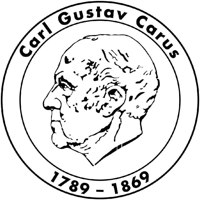PUBLICATIONS
Publications in peer reviewed journals
- Pöhlmann, C., M. Thomas, S. Förster, M. Brandt, M. Hartmann, A. Bleich, and F. Gunzer. 2013. Improving health from the inside: use of engineered intestinal microorganisms as in situ cytokine delivery system. Bioengineered May-Jun;4(3):172-179.
- Michael S., L. M. Keubler, A. Smoczek, M. Meier, F. Gunzer, C. Pöhlmann, U. Krause-Buchholz, H. J. Hedrich, and A. Bleich. 2013. Quantitative phenotyping of inflammatory bowel disease in the IL10-deficient mouse by use of non-invasive magnetic resonance imaging. Inflamm. Bowel Dis. Jan;19(1):185-193.
- Zschüttig, A., K. Zimmermann, J. Blom, A. Goesmann, C. Pöhlmann, and F. Gunzer. 2012. Identification and characterization of microcin S, a new antibacterial peptide produced by probiotic Escherichia coli G3/10. PLoS ONE 7(3):e33351; 1-9.
- Pöhlmann, C., M. Brandt, D. S. Mottok, A. Zschüttig, J. W. Campbell, F. R. Blattner, D. Frisch, and F. Gunzer. 2012. Periplasmic delivery of biologically active human interleukin 10 in Escherichia coli via a Sec-dependent signal peptide. J.Mol.Microb.Biotech. 21;22(1) 1-9.
- Alter, T., B. Appel, E. Bartelt, R. Dieckmann, C. Eichhorn, R. Erler, C. Frank, G. Gerdts, F. Gunzer, S. Hühn, J. Neifer, B. Oberheitmann, and E. Strauch. 2011. Vibrio-Infektionen durch Lebensmittel und Meerwasser. Das Netzwerk „VibrioNet“ stellt sich vor. Bundesgesundheitsblatt - Gesundheitsforschung - Gesundheitsschutz 54:1235-1240
- Friedrich, T., S. Rahman, W. Weigel, W. Rabsch, A. Fruth, E. Ron, F. Gunzer, T. Dandekar, J. Hacker, T. Müller, and U. Dobrindt. 2010. High-throughput microarray technology in diagnostics of enterobacteria based on genome-wide probe selection and regression analysis. BMC Genomics 11, 591.
- Weiss, S. M., M. Ladwein, D. Schmidt, J. Ehinger, S. Lommel, K. Städing, U. Beutling, A. Disanza, R. Frank, L. Jänsch, G. Scita, F. Gunzer, K. Rottner, and T. E. B. Stradal. 2009. IRSp53 links the enterohemorrhagic E. coli effectors Tir and EspFU for actin pedestal formation. Cell Host Microbe 5; 244-258.
- Krämer, S., G. Sellge, A. Lorentz, D. Krüger, M. Schemann, K. Feilhauer, F. Gunzer, and S. C. Bischoff. 2008. Selective activation of human intestinal mast cells by Escherichia coli hemolysin. J.Immunol. Jul. 15; 181(2): 1438-1445
- Bleich, A., J. P. Sundberg, A. Smoczek, R. V. Wasielewski, M. F. de Buhr, L. M. Janus, G. Julga, S. N. Ukena, H. J. Hedrich, and F. Gunzer. 2008. Sensitivity to Escherichia coli Nissle 1917 in mice is dependent on environment and genetic background. Int.J.Exp.Path. 89: 45-54.
- Ukena, S. N., A. Singh, U. Dringenberg, R. Engelhardt, U. Seidler, W. Hansen, A. Bleich, D. Bruder, G. Rogler, S. Suerbaum, J. Buer, F. Gunzer, and A. M. Westendorf. 2007. Probiotic Escherichia coli Nissle 1917 inhibits leaky gut by enhancing mucosal integrity. PLoS ONE 12;2(12):e1308; 1-9.
- Coldewey, S. M., M. Hartmann, D. S. Schmidt, U. Engelking, S. N. Ukena, and F. Gunzer. 2007. Impact of the rpoS genotype for acid resistance patterns of pathogenic and probiotic Escherichia coli. BMC Microbiol. Mar. 26;7:21.
- Ukena, S. N., A. M. Westendorf, W. Hansen, M. Rohde, R. Geffers, S. Coldewey, S. Suerbaum, J. Buer, and F. Gunzer. 2005. The host response to the probiotic Escherichia coli strain Nissle 1917: Specific up-regulation of the proinflammatory chemokine MCP-1. BMC Med.Genet. Dec. 13;6:43.
- Reuter, C. W., M. A. Morgan, F. C. Bange, F. Gunzer, M. Eder, B. Hertenstein, and A. Ganser. 2005. Candida kefyr as an emerging pathogen causing nosocomial bloodstream infections in neutropenic leukemia patients. Clin.Infect.Dis. 41:1365-1366.
- Sun, J., F. Gunzer, A. M. Westendorf, J. Buer, M. Scharfe, F. Gößling, H. Blöcker, and A. P. Zeng. 2005. Genomic peculiarity of coding sequences and metabolic potential of probiotic Escherichia coli strain Nissle 1917 inferred from raw genome data. J.Biotechnol. 117:147-161.
- Westendorf, A. M., F. Gunzer, S. Deppenmeier, J. K. Hunger, M. A. Schmidt, J. Buer, and D. Bruder. 2005. Intestinal immunity of E. coli NISSLE 1917: A safe carrier for therapeutic molecules. FEMS Immunol.Med.Microbiol. 43:373-384
- Westendorf, A. M., M. Templin, R. Geffers, S. Deppenmeier, A. D. Gruber, M. Probst-Kepper, W. Hansen, R. S. Liblau, F. Gunzer, D. Bruder, and J. Buer. 2005.CD4+ T Cell mediated intestinal immunity: chronic inflammation versus immune regulation. Gut 54:60-69.
- Ma H. W., B. Kumar, U. Ditges, F. Gunzer, J. Buer, and A. P. Zeng. 2004. An extended transcriptional regulatory network of Escherichia coli and its structural analysis. Nucleic Acids Res. 32:6643-6649.
- Pape, L., F. Gunzer, S. Ziesing, A. Pape, G. Offner, and J. H. Ehrich. 2004. Bacterial pathogens, resistance patterns and treatment options in community acquired pediatric urinary tract infection. Klin.Pädiatr. 216:83-86.
- Pulz, M., A. Matussek, M. Monazahian, A. Tittel, E. Nikolic, M. Hartmann, T. Bellin, J. Buer, and F. Gunzer. 2003. Comparison of a Shiga toxin ELISA and two different types of PCR for detection of Shiga toxin-producing Escherichia coli in human stool specimens. J.Clin.Microbiol. 41:4671-4675.
- Matussek, A., J. Lauber, A. Bergau, W. Hansen, M. Rohde, K. E. J. Dittmar, M. Gunzer, M. Mengel, P. Gatzlaff, M. Hartmann, J. Buer, and F. Gunzer. 2003. Molecular and functional analysis of Shiga toxin induced response patterns in human vascular endothelial cells. Blood. 102:1323-1332.
- Gunzer, F., I. Hennig-Pauka, K. H. Waldmann, R. Sandhoff, H. J. Gröne, H. H. Kreipe, A. Matussek, and M. Mengel. 2002. Gnotobiotic piglets develop thrombotic microangiopathy after oral infection with enterohemorrhagic Escherichia coli. Am.J.Clin.Pathol. 118:364-375.
- Bellin, T., M. Pulz, A. Matussek, H. G. Hempen, and F. Gunzer. 2001. Rapid detection of enterohemorrhagic Escherichia coli by real-time PCR with fluorescent hybridization probes. J.Clin.Microbiol. 39:370-374.
- Dogan, S., F. Gunzer, H. Guenay, G. Hillmann, and W. Geurtsen. 2000. Infection of primary human gingival fibroblasts by Porphyromonas gingivalis and Prevotella intermedia. Clin.Oral Investig. 4:35-41.
- Bange, F. C., S. Ruttkowski, M. Kist, S. Bereswill, D. Meyer, R. E. Schmidt, H. Tillmann, I. Schedel, M. P. Manns, and F. Gunzer. 2000. Clinical microbiological case: a 35-year-old HIV-positive man with intermittent fever and chronic diarrhea. Clin.Microbiol.Infect. 6:613-616.
- Gunzer, F., U. Bohn, S. Fuchs, I. Mühldorfer, J. Hacker, S. Tzipori, and A. Donohue-Rolfe. 1998. Construction and characterization of an isogenic slt-II deletion mutant of enterohemorrhagic Escherichia coli. Infect.Immun. 66:2337-2341.
- Datz, M., S. Janetzki-Mittmann, S. Franke, F. Gunzer, H. Schmidt, and H. Karch. 1996. Analysis of the enterohemorrhagic Escherichia coli O157 DNA region containing lambdoid phage gene p and Shiga-like toxin structural genes. Appl.Environ.Microbiol. 62:791-797.
- Tzipori, S., F. Gunzer, M. S. Donnenberg, L. de Montigny, J. B. Kaper, and A. Donohue-Rolfe. 1995. The role of the eaeA gene in diarrhea and neurological complications in a gnotobiotic piglet model of enterohemorrhagic Escherichia coli infection. Infect.Immun. 63:3621-3627.
- Franke, S., F. Gunzer, L. H. Wieler, G. Baljer, and H. Karch. 1995. Construction of recombinant Shiga-like toxin-IIv (SLT-IIv) and its use in monitoring the SLT-IIv antibody status of pigs. Vet.Microbiol. 43:41-52.
- Gunzer, F. and H. Karch. 1993. Expression of A and B subunits of Shiga-like toxin II as fusions with glutathione S-transferase and their potential for use in seroepidemiology. J.Clin.Microbiol. 31:2604-2610.
- Karch, H., H. Böhm, H. Schmidt, F. Gunzer, S. Aleksic, and J. Heesemann. 1993. Clonal structure and pathogenicity of Shiga-like toxin-producing, sorbitol-fermenting Escherichia coli O157:H-. J.Clin.Microbiol. 31:1200-1205.
- Gunzer, F., H. Böhm, H. Rüssmann, M. Bitzan, S. Aleksic, and H. Karch. 1992. Molecular detection of sorbitol-fermenting Escherichia coli O157 in patients with hemolytic-uremic syndrome. J.Clin.Microbiol. 30:1807-1810.
Reviews
- Karch, H., F. Gunzer, A. Schwarzkopf, H. Schmidt, und M. Bitzan. 1993. Molekularbiologie und pathogenetische Bedeutung von Shiga- und Shiga-like Toxinen. BioEng. 9:39-45.
Further publications
- Büttner, C., S. Leschner, S. Weiss, und F. Gunzer. 2011. Mit Bakterien gegen den Krebs – Modifizierte probiotische Bakterien für die Behandlung von soliden Tumoren. GENOMXPRESS 1.11:11-13.
- Schrauder, A., C. Strehlau, F. Gunzer, L. Grigull, and S. Glüer. 2001. Taenia saginata (beef tapeworm). Monatsschr.Kinderheilkd. 149:950-951.
Book chapters
- Schmidt, H., und F. Gunzer. 2009. Escherichia coli - Pathogenitätsfaktoren und probiotisches Potential. S. 132-143. In S. Bischoff (Hg.), Probiotika, Präbiotika und Synbiotika. Georg Thieme Verlag.
- Gunzer, F., I. Hennig-Pauka, K. H. Waldmann, and M. Mengel. 2003. Gnotobiotic piglets as an animal model for oral infection with O157 and non-O157 serotypes of STEC. Methods Mol.Med. 73:307-327.
- Gunzer, F., O. Böhler, B. Henkel, A. Schwarzkopf, H. Schmidt, H. Karch, and R. Lissner. 1994. Capability of commercial immunoglobulin preparations to react with and neutralize Shiga-like toxin II. p. 349-352. In M.A. Karmali and A.G. Goglio (ed.), Recent Advances in Verocytotoxin-producing Escherichia coli Infections. Elsevier Science B. V.


